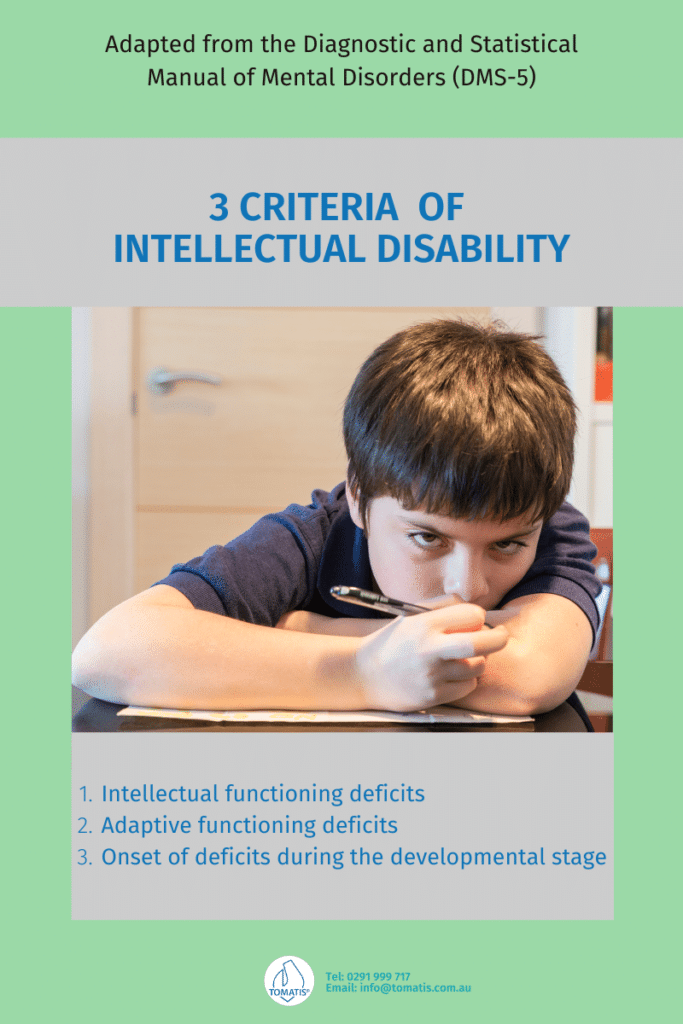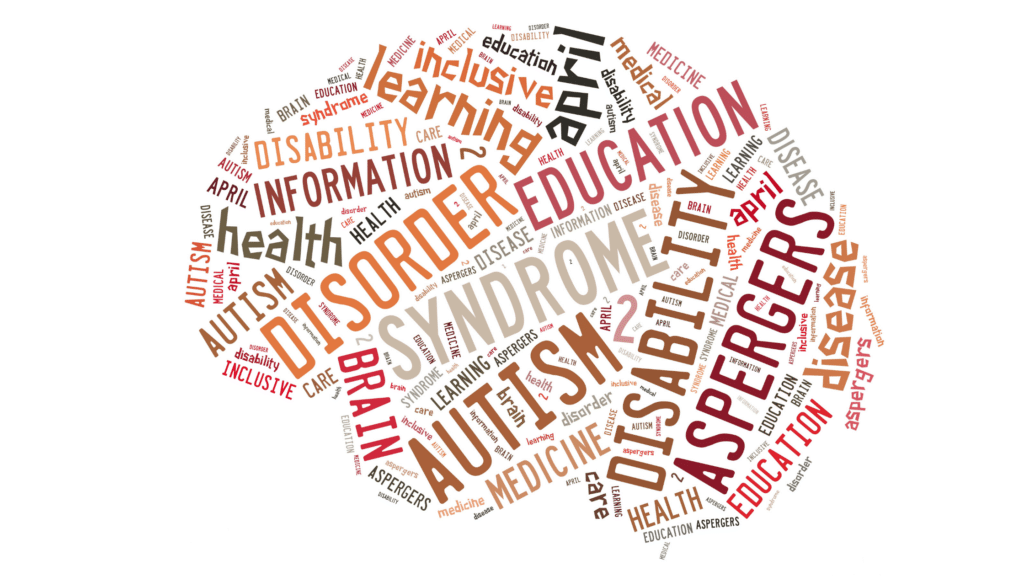Have you heard anyone use the word “retard”? Few people still use mental retardation to describe someone else who finds it hard to learn and adapt. It is an obsolete term that may create stigma for people who have a form of intellectual disability. Besides, it may sound offensive, especially if your child has the condition.
Some people also generalise a condition as an intellectual disability, even if it is autism. The line between autism and intellectual disability remains blurry. Medical professionals often can’t tell apart the two conditions and come up with a misdiagnosis. It can lead to interventions that do not match the condition.
To clarify if your child has autism or an intellectual disability, talk to us at Tomatis® Australia https://tomatis.com.au/contact-us/.
Let’s tread the fine line between autism and intellectual disability to grasp a better understanding of the two conditions:
- What is intellectual disability?
- What is autism?
- How is autism related to intellectual disability?
- How are autism and intellectual disability diagnosed?
- What are interventions for autism and intellectual disability?
- Can the Tomatis® Method help your child with autism and intellectual disability?

What is intellectual disability?
Intellectual disability falls under developmental disability based on the Diagnostic and Statistical Manual of Mental Disorders (DSM-5). Intellectual disability refers to problems in intellectual capabilities. On the other hand, learning disability refers to problems developing skills like speaking, reading, and writing.
The Australian Institute of Health and Welfare reports that intellectual disability affects about half a million Australians. Around 61% of them have significant difficulties in their activities of daily living. The report also identified speech problems as the most common intellectual disability in 2003.
Intellectual disability appears before a child reaches the age of 18 or even before birth. However, the American Association on Intellectual and Developmental Disabilities (AAIDD) pegs it at 22 years instead of 18. AAIDD’s reason behind the change in age is because studies show that the development of the brain continues until the age of 20.
Some of the causes are related to biological, environmental, and genetic conditions. The exact cause of intellectual disability is yet to be discovered.
If your child has not been diagnosed, ask yourself the following questions:
- Was my child delayed in crawling, sitting up, or walking compared to children of the same age?
- Was my child delayed in speaking, or is my child having difficulty talking?
- Does my child have problems remembering details?
- Is my child unaware of the results of his/her action?
- Does my child find it hard to solve problems?
It is best to consult a child psychologist if you answered “yes” to most of the tale-tell signs of intellectual disability. If left untreated, it further affects your child’s functioning.
An IQ of 70 or below is considered an intellectual disability. It is coupled with problems in two functional areas:
- Intellectual functioning: Your child may find it difficult to learn things in school and get poor grades. Your child may have trouble thinking abstractly, planning, solving problems, and making judgements.
- Adaptive functioning: Your child may have difficulty communicating with other people, or interactions may be awkward. Most times, you observe your child having problems performing activities of daily living and self-care. Your child may not be able to do things on his/her own like typical children.
Intellectual disability is not a disease. Medical professionals manage it to improve a child’s functioning. The child’s condition can be mild, moderate, or severe. An IQ test can be used to measure intellectual disability.
However, children with coexisting autism may be unable to answer questions in an IQ test. They may lack experience and knowledge. Thus, an IQ test may be insufficient to measure deficiencies. Medical professionals use additional diagnostic tools to come up with a sound evaluation.

What is autism?
Autism impacts a person’s behaviour, communication, and social interactions. It is referred to as a developmental disorder as symptoms appear in the first two years of a child. Like intellectual disability, it persists throughout the lifetime with no cure.
Autism used to have a separate diagnosis from other developmental disorders. However, the latest Diagnostic and Statistical Manual of Mental Disorders (DSM-5) of the American Psychiatric Association grouped the developmental disorders into one. Autism Spectrum Disorder (ASD) includes autism, Asperger’s syndrome, childhood disintegrative disorder, and pervasive developmental disorder not otherwise specified.
ASD, or autism, has a prevalence rate of about 1 in every 54 kids in the US and steadily increasing. The causes, symptoms, and impacts of ASD are varied. It is closely associated with intellectual disability. Read on to know why.
How is autism related to intellectual disability?
Does your child exhibit autism and intellectual disability at the same time?
Studies show that intellectual disability and behavioural disorders frequently coexist. Experts reported that people with intellectual disability exhibit aggressive or destructive behaviours.
Studies also reveal that among all people with autism, about 50% to 70% have an intellectual disability. Researchers found that the more severe the intellectual disability, the greater the probability of autism. About 3%-4% of the population has a combined condition of intellectual disability and autism.
Intellectual disability and autism share common genes. Researchers identified many genes that play a role in the development of the two coexisting conditions. However, not all children with both disorders will exhibit the same symptoms.
It is crucial to get a comprehensive evaluation to ensure proper management. Your child may benefit from early diagnosis and intervention. It usually involves a multi-disciplinary approach to address behaviour, speech-language, physical, or occupational issues.

How are autism and intellectual disability diagnosed?
DSM-5 points out the need to use clinical evaluation and standard intelligence tests. It should measure intelligence and adaptive functioning.
Better diagnostic tools are necessary to identify autism and intellectual disability. It includes a better assessment of symptoms for each condition.
On the biological aspect, medical professionals need a better understanding of genetics to pinpoint the cause or mutations, which leads to the specific condition.
There are various tests for intellectual disability. Some of these tests include Wechsler Intelligence Scales, Stanford-Binet IQ Test, and Culture-Faire Intelligence Test. Some of these examinations determine IQ scores based on a person’s verbal, perceptual, memory, and processing skills.
There are no medical tests for autism. Instead, a doctor may ask about the child’s developmental history from you. Autism usually appears at age one year and six months or earlier.
There are some diagnostic tools other than direct observation from you as a parent. It includes behavioural and developmental screening at various ages – 9, 18, and 30 months as recommended by the American Academy of Pediatrics.
Additional screening may be required during regular check-ups at 18 and 24 months. A comprehensive developmental evaluation is also necessary to determine appropriate interventions.

What are the interventions for autism and intellectual disability?
- Autism: Medical professionals can recommend various interventions. These interventions manage your child’s symptoms and improve affected skills. It helps your child cope with daily activities of daily living.
Interventions may include a multi-disciplinary approach. Some of these approaches are the following:
- Behavioural management
- Cognitive behaviour therapy
- Nutrition or dietary approaches
- Occupational therapy
- Social skills therapy
- Speech-language therapy
- Intellectual disability: Interventions for intellectual disability focus on support to enable your child to function independently.
- Some support services include communication therapy, speech-language therapy, special education program, and rehabilitation counselling. Support from family is also crucial as the primary caregivers.
- Professionals need to identify and manage comorbid conditions, such as autism. Interventions for children with coexisting autism emphasise social communication skills and peer-mediated therapies. These interventions have been noted as effective for children by the American Speech-Language-Hearing Association.
- Medications and non-pharmacological interventions may be considered.

Can the Tomatis® Method help your child with autism and intellectual disability?
Does “The Mozart Effect” sound familiar to you? It is a concept that suggests listening to Mozart’s music may temporarily boost intelligence.
Dr. Frances Rauscher and colleagues studied 36 college students at the University of California, Irvine, in 1993. The students scored 8-9 points higher on the IQ test after listening to Mozart’s sonata. The effect, though, was temporary.
Researchers investigated the results of Dr. Rauscher’s study and came up with varied findings. In 1999, a study revealed a conflicting result that Mozart’s sonata did not improve spatial reasoning. However, another 2006 study concluded that Mozart’s music enhanced spatial learning by activating specific areas in the brain.
More studies have to be performed to arrive at a sound result that “The Mozart Effect” leads to positive outcomes for people with intellectual disability.
On a lighter note, a study reveals that music therapy may positively affect verbal communication and social skills of children with autism. Music therapy may also promote a better parent-child relationship.
One kind of therapy using music is the Tomatis® Method. The Tomatis® Method plays music mainly by Mozart and Gregorian chants. It is a promising therapy for children with autism.
An experimental study shows that the Tomatis® Method treated symptoms of autism. It reduced stereotypical movements and increased communication and social interactions.
These studies reveal some of the reasons how the Tomatis® Method can benefit your child with autism and intellectual disability.
Françoise Nicoloff
Official Representative of Tomatis Developpement SA in Australia, Asia and South Pacific, Director of the Australian Tomatis® Method, Registered Psychologist, Certified Tomatis® Consultant Senior, Tomatis® International Trainer and Speaker, Co-author of the Listening Journey Series, 40 Years of Experience, Neurodiversity Speaker



